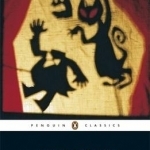
Sentinels of the Multiverse
Games
App
=============================== “This is a must have addition to your digital board game...

Sign Docs - Best Digital Signature & Business Document Manager App for iPad
Productivity and Business
App
##### Special discounted price for a limited time ##### ✓ Featured in iTunes 'New & Noteworthy'...

RBC Rewards
Lifestyle and Shopping
App
EARN. SHOP. TRAVEL. With the RBC Rewards® app*, you can do more with your RBC Rewards points on the...
Sassy Brit (97 KP) rated 11 Missed Calls in Books
Jun 5, 2019
Is their mother dead, or is there another reason she walked out of their lives for good? Would you forgive your mother if she did that to YOU?
OMG! If you love books about dysfunctional families and all the drama that attracts, you should really enjoy this one. Honestly, if you think your family were crazy, try this one; They’ll suddenly look like saints and you’ll feel so much better about your life for reading this!
Carpenter captured both Debbie’s and Anna’s characters (and what they each went through), very well. I totally did not see that ending coming and I was convinced I had all the answers, right up until the very end. I also got really involved for Anna’s plight for answers, and felt for how lonely she was when she finds her husband’s love letter from another woman, which ingeniously added another twist to this family drama. Despite the holiday in Spain’s Canary Islands, this book has a very British feel to it, which stands to reason as both the author and setting are based in the north of England and it can be quite grim (weather-wise) up North! Overall this was an entertaining read, rife with family secrets, lies and surprises!
And a touch of bad weather, too.
MaryAnn (14 KP) rated A Very Austen Valentine in Books
Nov 4, 2019
I Dream of You by Robin Helm
Newly-married Elizabeth Darcy has a plan: to charm her too-busy husband into desiring her company as much as he did when he was courting her. A series of romantic dreams gives her just the push she needs to put that plan into action.
Sir Walter Takes a Wife by Laura Hile
Faced with a lonely future and finding himself strapped for cash, Persuasions Sir Walter Elliot manfully decides to marry again. But his careful plans go sadly awry! A lighthearted Valentine mash-up featuring two of Jane Austens worst snobs.
My Forever Valentine by Wendi Sotis
Jane and Charles Bingley have married, even though Miss Elizabeth Bennet remains certain Mr. Fitzwilliam Darcy gave his best effort to keep them apart. After Mr. Darcy refused to stand up with Bingley and did not attend the wedding, she despises the gentleman more than ever and finds his company intolerable. How will she endure her visit to Kent if Mr. Darcy turns up everywhere she goes?
Pretence and Prejudice by Barbara Cornthwaite
A chance encounter with a handsome stranger forces Elizabeth to resort to subterfuge in order to discover his true intentions.
My Valentine by Mandy H. Cook Mandy H. Cook
Little Charlotte was always determined and independent, traits which served her well as she battled a serious childhood illness and later as she took on Polite Society. Will those traits now deprive her of true love? Or would her lifelong Valentine win her heart?
The Lovers Ruse by Susan Kaye
In this Persuasion alteration, Anne is so altered by Wentworths love in the summer of 1806, she refuses to give him up when both her godmother and father try to persuade her. The Lovers Rusefollows Frederick and Anne through their whirlwind courtship and their secret engagement. When Wentworth returns for his Annie girl, the cat comes out of the bag.
My Thoughts: These six charming novellas centered around Valentines will entice all those who adore Jane Austen's writings. Based on characters from Jane Austen's novels; I enjoyed reading into the lives of the Darcy's; I was impressed that the writers Robin Helm, Wendi Sotis and Mandy H. Cook are all centered their novellas around the same family. Each storytelling its own unique view of their lives.
Each story is fun to read, and takes the reader back to a simpler time, of love, romance, and proper etiquette. Each story has it's own charm and brings the reader closer to the characters.
My favorites have to be the novellas containing the characters Elizabeth and Fitzwilliam Darcy, my absolute favorite being "I Dream of You". In this novella we learn how to give rather than to receive and the joys we can draw from each act of kindness.
If you love historical fiction, and Jane Austen novels, then this is certainly a book for you.

SALAH Guide(VIDEO)+Audio (Quran & Sunnah)+(Q & A)
Education and Reference
App
☀ Salah/PRAYER VIDEO & Audio Step By Step Guide+(Q&A) ☀ APP MOST IMPORTANT FEATURES ➴ ➥...
Bob Mann (459 KP) rated The Girl in the Spider's Web (2018) in Movies
Sep 28, 2021
Now though we have “A New Dragon Tattoo Story” (as the film’s subtitle clumsily declares) based on the book by David Lagercrantz, who took over the literary franchise after the untimely death of Stieg Larsson. Picking up the reins as Salander is that most British of actresses Claire Foy…. which seems an odd choice, but one which – after you get past the rather odd accent – she just about pulls off.
The Plot
Lizbeth Salendar (Claire Foy) has an interesting hobby. She is a vigilante, like a lesbian Batman, stalking the streets of Stockholm putting wrongs right where abusive boyfriends/husbands are concerned.
She is also a hacking machine for rent. And Frans Balder (Stephen Merchant) has a problem. He has invented a software program that allows its user to control every nuclear warhead in the world from a single laptop (cue every other Bond/24/Austin Powers script ever written). But he has had second thoughts and wants it back from its resting place on the server of the NSA’s chief hacker, Ed Needham (Lakeith Stanfield). Balder recruits Salander to recover it, but when things go pear-shaped Salander finds herself on the wrong side of both the law and the encircling terrorist “spiders”.
The Review
Scandi-dramas work best when they exploit the snow; maintain a sexual tension; and go dark, gritty and violent. On the plus side, “The Girl in the Spider’s Web” ticks most of those boxes adequately. Foy’s Salandar is smart, sassy and sexy, outwitting the best of the best, and only once finding her intellectual match. (If you’re a lesbian, Stockholm is most definitely the place to be: there only seemed to be one hetero-female there, and she was an adulteress).
But Salander also has a Bond-like invincibility that unfortunately tests your incredulity at multiple points. Contributing to the excitement is the stunt team, who keep themselves busy with some great car and bike chases.
So, the movie has its moments and is great to look at. But the film ends up a sandwich or two short of a smorgasbord, thanks largely to some totally bonkers plot points and more than a few ridiculous coincidences. There are without doubt an array of well-constructed set pieces here, but they fail to fully connect with any great conviction. An example of a scene that infuriates is a dramatic bathroom fight in a red-lit gloom with identical protagonists that is cut together so furiously you would need a Blu-ray slo-mo to work out what the hell is going on… and then I fear you might fail.
So it’s an A- for the Production Design (Eve Stewart, “The Danish Girl“) and the Cinematography (Pedro Luque, “Don’t Breathe“), but a C- for the director Fede Alvarez (also “Don’t Breathe“).
Avoid the Trailer
I will save my biggest source of wrath though for that major bug-bear of mine: trailers that spoil the plot.
I’ve asked before, but for a film like this, WHO EXACTLY PUTS TOGETHER THE TRAILER? I’d like to think it’s some mindless committee of marketing execs somewhere. Because I HONESTLY CAN’T BELIEVE it would be the director! (If I’m wrong though, I would point my finger at Mr Alvarez and chant “shame, shame, shame”!)
For the trailer that I saw playing in UK cinemas does it’s level best to not only drop in the key spoilers of the plot (including the climactic scene), but also spoils just about every action money-shot in the movie. It’s all so pointless. If you’ve by any chance managed to get to this point without seeing the trailer, then SAVE YOURSELVES and AVOID IT!
(The one attached below by the way is slightly – slightly! – better, including some over-dubbing of a line that I don’t think was in the film. Perhaps they realised their huge mistake and reissued it?)
The Turns
As I mentioned earlier, Claire Foy again extends her range by playing Salander really well. She is the reason to go and see the film.
The Daniel Craig part of Blomkvist is played here by Sverrir Gudnason, who was in “The Circle” (which I saw) and was Borg in “Borg McEnroe” (which I didn’t). Blomkvist really is a lazy ****, since he works for the publication “Millenium” but writes absolutely nothing for years. It must be only because the boss (Vicky Krieps) fancies him that he keeps his job. Gudnason is good enough, but has very little to do in the movie: its the Salander/Foy show. Slightly, but only slightly, more involved is Lakeith Standfield as the US intelligence man.
Given little to do in the plot. Sverrir Gudnason as the incredibly unproductive ‘journalist’ Mikael Blomkvist. (Source: Sony Pictures Entertainment)
Stephen Merchant is an odd casting choice for Balder. Not withstanding that he was brilliant when almost unrecognisable in “Logan“, here he looks far too much like his “Ricky Gervais sidekick” persona to be taken seriously: and it’s not even remotely a comedy (there is only one humorous moment in the film, a nice “clicker” gag in a car park).
Final Thoughts
I had high hopes for this film from the trailer, but I was left disappointed. It’s not classic Scandi-noir like the original “Tattoo”; and it’s not going for the black comedy angle of “Headhunters” (which I saw again last week and loved… again!). It falls into a rather “meh” category. It’s not a bad evening’s watch, but perhaps worth leaving for a DVD/cable showing.
Sass Perilla (36 KP) rated The Master and Margarita in Books
Aug 9, 2019
Firstly, I didn’t intend to write an essay on this novel. However, once started I found I had a lot to say, and the more I thought about the plot and characters, the more ideas and parallels were sparked, so I am hopeful that the verbosity of this review can be forgiven.
At the risk of sounding both ignorant and uncultured, I found this novel (at least at first) bloody hard slog; not least because the Russian characters have three names, plus a nickname, plus a pun on their name (none of which work particularly well in translation and all of which sound rather similar to the English untrained ear). As an example- Ivan Nikolaevich Ponyrev (who seems to be referred to by any and all of these names) is also known as “Homeless” and “the poet” is a key character in the opening section of the novel. To further demonstrate: there are 17 different names that start with A that are used to refer to 15 different characters with Andreyevich used as the middle name of a bereaved uncle, who makes a journey from Kiev after his nephew is beheaded in a freak tram accident- and Andrey the buffet manager at a Moscow theatre. Clear as mud right? And that is before starting on similarly named characters with the initials M, P, L and S! At my last count there were 45 distinct characters, and I am fairly sure there will be some that I have missed. Hence, I did a lot of re-reading to work out exactly who was doing what to whom.
Additionally, I would suggest you need to be wary of the different translations. The distinct changes in meaning are subtle but important. To triangulate I had three versions at my disposal: Hugh Aplin’s translation (available for free on Kindle), the audiobook version translated by Richard Pevear and Larissa Volokhonsky (which I listened to simultaneously when reading the book to come to my own interpretation, and the subtitles for the Russian TV miniseries from 2005 when I gave up trying to work out who was who from name alone!
So those were my “technical” issues (if you like) with engaging with this novel, and this lack of clarity and understanding (and my own lack of contextual knowledge of Stalinist Russia) meant I missed many of the (what I am sure are hysterically funny to those in the know) satirical jokes in the opening section. That said, the random action and quick changes of focus, undercurrent of chaos in Moscow despite entrenched hierarchal structures and clear threat that (any) one could go missing at any time, for an unclear reason gave a clear insight into the mind and fears of a 1930s Russian citizen. No wonder it was available only in censored form for so long.
Despite these hardships, there were some genuinely laugh out loud moments in the first Moscow based part of the novel. The citizens have not lost their individuality, as they scrabble and fight for bank notes in the theatre, which are later revealed to be worthless. Nor have they lost their sense of pride and vanity, which we see in the female theatre goers, so desperate to attain the fashionable French couture (which later literally disappears from their bodies leaving semi-naked citizenesses desperately trying to cover themselves in a scene reminiscent of “Allo Allo” meets “Benny Hill”). When Professor Woland says his show will “expose” what the locals have failed to realise is that it is their (moral) shortcomings that are about to be revealed. The message is clearly, that no government can successfully legislate against human nature.
Oooh- and another fun fact, apparently Woland (later revealed- or perhaps is implied- to be Satan) was the inspiration to the Rolling Stones 1968 hit “Sympathy for the Devil”, well at least that is what my Google-Fu tells me.
Obviously, there were substantial hurdles to leap, however, I found by the second half of the novel, when we finally meet the eponymous characters, I had got in to the swing of things and begun to embrace the farcical surrealism of the novel.
The second “book” marks a change in tone, although it continues to cut away to scenes of Jesus’ sentencing by Pilate and execution (here known in the Aramaic form Yeshua). Ironically it is these scenes that are the most “real” and substantially human, as Pilate’s decision weighs head achingly heavily on him throughout. The Master and Margarita seem to be the only two characters fully invested in the authenticity of literature, and serve as a counterpoint to the heavily censored “monstrous” writing of Ivan and the rest of the writers’ union Massolit, more interested in fine dining and what their positions can do for them then the production of quality writing.
And it is Margarita’s journey of discovery and liberation from the stodgy, miserable societal expectations of that leads her back to her Master. Bulgakov mixes classical myth, Russian folklore and Bible stories to give us an impression of the timelessness of the central romance. As the worlds of communist Moscow and the inner worlds of the Master and Margarita collide, we are informed of the former’s desire to excuse all magic (and mischief) as the product of mass hypnosis, when the latter (and the reader) are fully aware of the spiritual significance and dimension of the events.
Clever, astute and in places laugh out loud funny, this novel none-the-less requires a level of dedication from the non-Russian speaking reader. Worth a read? Yes. Worth a re-read? Maybe not.




